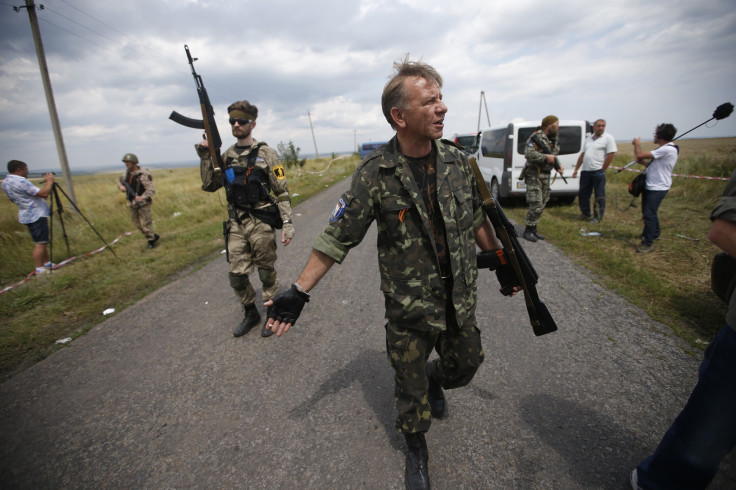MH17 Victims: Questions Remain On Number Of Bodies Recovered, Location Of Those Unaccounted For

The Dutch government sent a Hercules transport plane to Kharkiv, Ukraine, Tuesday to pick up the remains of about 282 victims killed in the crash of Malaysia Airlines Flight MH17 last week. Major questions remain, though, about the location of the bodies of the others killed in the disaster and when, if ever, the victims’ relatives can expect to get them.
Flight MH17 was traveling from Amsterdam to Kuala Lumpur last Thursday when, international officials believe, it was shot down by pro-Russian separatists. The rebels have denied firing on the plane, but immediately took control of the crash site and have not only stalled in giving investigators access to the horrific scene and failed to preserve the victims’ dignity, but were also seen stealing valuables from the plane’s luggage.
Train carrying most remains of almost 300 victims leaves site of #MH17 wreckage: http://t.co/1lksfAg28U pic.twitter.com/ssatJp3QDA
- Reuters Top News (@Reuters) July 21, 2014Bodies found this morning from #MH17 just left on side of road. One person's watch left on top of the bodybag pic.twitter.com/uzPHqqTBql
- ClarkBentson (@ClarkBentson) July 20, 2014Bodies of the 283 passengers and 15 crew were left in the open field for more than 48 hours, exposed to harsh elements including intense heat and a rainstorm. A refrigerated train car finally arrived Tuesday in Kharkiv, which is controlled by the Ukrainian government, although members of the Dutch team preparing to lead the investigation from Holland said that exactly how many bodies are accounted for remains unclear. Dutch citizens made up 193 of the victims.
Numbers keep shifting, Dutch forensic team says they're only sure about recovery of 200 #MH17 victims. Confirm receipt of black boxes
- Simon Ostrovsky (@SimonOstrovsky) July 22, 2014Ukrainian officials have said 282 bodies and assorted body parts from the 16 other victims were taken from the crash site. Alexander Borodai - the self-proclaimed prime minister of the Donetsk People's Republic separatist group - said Tuesday that 282 bodies had been loaded onto the train along with 87 body fragments, although the Guardian reported that it was unclear how many people those body fragments belonged to.
Borodari, whose claims were echoed by other rebels, was contradicted by the Dutch forensics team, which said the train only carried 200 bodies into Kharkiv. Their initial assertion by multple members of the media reporting from the Ukrainian-government controlled city, located just over four hours away from Torez, where the train departed from.
Dutch forensics team in #Ukraine says will hv to search again for bodies from #malaysianplanecrash #MH17 won't leave til all remains found
- Richard Galpin (@Richardgalpin) July 22, 2014It’s also possible that bodies or pieces of bodies remain at the crash site lost in the rubble. The Dutch prime minister told reporters Saturday he was “shocked by images of completely disrespectful behavior” that included rebels failing to secure a body still strapped into the plane with its bare toes exposed through a shoe.
OSCE says human remains still present at #MH17 crash site in Eastern Ukraine, recovery efforts appear halted
- Reuters Top News (@Reuters) July 22, 2014“The news we got today of the bodies being dragged around, of the site not being teated properly, has really created a shock in the Netherlands,” Dutch Foreign Minister Frans Timmermans told Ukrainian President Petro Poroshenko. “People are angry, furious at what they hear.”
© Copyright IBTimes 2024. All rights reserved.





















